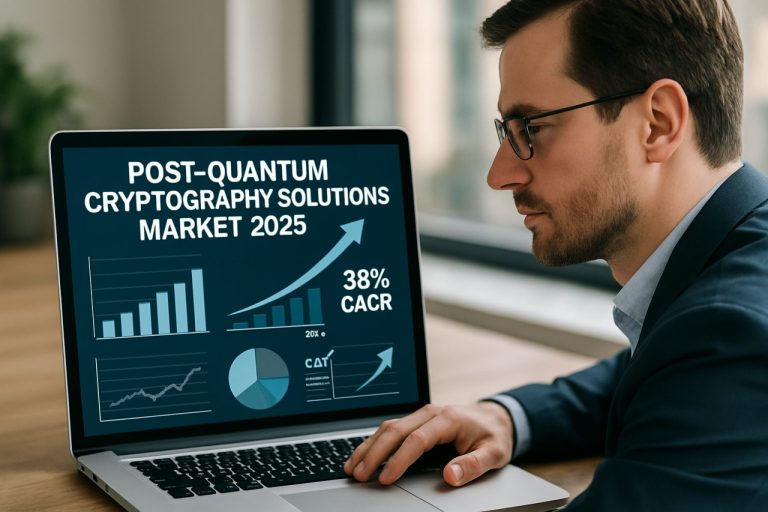
Tokenized Gaming Platforms Market Report 2025: In-Depth Analysis of Blockchain-Driven Growth, Monetization Models, and Global Trends. Explore Key Players, Forecasts, and Strategic Opportunities Shaping the Next 5 Years.
- Executive Summary & Market Overview
- Key Technology Trends in Tokenized Gaming Platforms
- Competitive Landscape and Leading Players
- Market Growth Forecasts and Revenue Projections (2025–2030)
- Regional Analysis: Adoption and Investment Hotspots
- Future Outlook: Innovations and Strategic Roadmaps
- Challenges, Risks, and Emerging Opportunities
- Sources & References
Executive Summary & Market Overview
Tokenized gaming platforms represent a transformative segment within the broader gaming and blockchain industries, leveraging blockchain technology to enable the creation, exchange, and ownership of in-game assets as digital tokens. These platforms utilize non-fungible tokens (NFTs) and fungible tokens to facilitate decentralized economies, player-driven marketplaces, and new monetization models. As of 2025, the tokenized gaming market is experiencing robust growth, driven by increasing adoption of blockchain technology, rising player demand for asset ownership, and the proliferation of play-to-earn (P2E) models.
According to Grand View Research, the global blockchain gaming market size was valued at USD 4.6 billion in 2023 and is projected to expand at a compound annual growth rate (CAGR) of over 68% from 2024 to 2030. This surge is attributed to the integration of tokenized assets, which empower players to monetize their in-game achievements and participate in decentralized finance (DeFi) ecosystems. Major platforms such as Sky Mavis (creator of Axie Infinity), Animoca Brands, and Gala Games are at the forefront, attracting millions of users and significant venture capital investment.
The market landscape in 2025 is characterized by several key trends:
- Interoperability: Platforms are increasingly supporting cross-game asset transfers, allowing players to use their tokenized items across multiple titles and ecosystems.
- Regulatory Evolution: Governments and regulatory bodies are developing clearer frameworks for digital asset ownership and trading, reducing legal uncertainties and fostering mainstream adoption (U.S. Securities and Exchange Commission).
- Institutional Investment: Venture capital and institutional investors are pouring funds into tokenized gaming startups, with over $2.5 billion invested in blockchain gaming projects in 2024 alone (Dapp.com).
- Player Empowerment: The shift towards player-owned economies is reshaping game development, with studios prioritizing community governance and decentralized decision-making.
Despite rapid growth, the sector faces challenges such as scalability, security concerns, and the need for sustainable economic models. Nonetheless, the outlook for tokenized gaming platforms in 2025 remains highly optimistic, with continued innovation expected to drive further expansion and mainstream integration.
Key Technology Trends in Tokenized Gaming Platforms
Tokenized gaming platforms are rapidly evolving, driven by the integration of blockchain technology, non-fungible tokens (NFTs), and decentralized finance (DeFi) mechanisms. In 2025, several key technology trends are shaping the landscape of these platforms, fundamentally altering how value, ownership, and engagement are structured within digital gaming ecosystems.
- Layer-2 Scaling Solutions: To address the scalability and transaction cost challenges of blockchain networks, tokenized gaming platforms are increasingly adopting Layer-2 solutions such as rollups and sidechains. These technologies enable faster, cheaper transactions, allowing for seamless in-game asset transfers and microtransactions without congesting the main blockchain. For example, platforms leveraging Polygon and Optimism are seeing significant growth due to their ability to support high-throughput gaming environments.
- Interoperable NFT Standards: The push for interoperability is leading to the adoption of universal NFT standards like ERC-721 and ERC-1155, enabling assets to move across different games and marketplaces. This trend is fostering the emergence of cross-platform economies, where players can utilize their digital assets in multiple virtual worlds, as highlighted by Enjin and MetaMask integrations.
- Decentralized Autonomous Organizations (DAOs): Governance in tokenized gaming is increasingly shifting to DAOs, empowering player communities to influence game development, asset issuance, and economic policies. This democratization of decision-making is exemplified by projects like Axie Infinity, where token holders participate in shaping the platform’s future.
- Play-to-Earn (P2E) and GameFi Innovations: The convergence of gaming and DeFi—often termed GameFi—is introducing new economic models. Players can earn, stake, and lend in-game tokens, blurring the lines between gaming and financial services. According to Dapp.com, the P2E sector continues to attract both players and investors, with innovative reward mechanisms and yield-generating opportunities.
- Enhanced Security and Compliance: As tokenized gaming platforms handle valuable digital assets, there is a growing emphasis on robust security protocols and regulatory compliance. Solutions such as multi-signature wallets, on-chain audits, and KYC/AML integrations are becoming standard, as noted by Chainalysis in its 2024 industry report.
These technology trends are collectively driving the maturation of tokenized gaming platforms, making them more scalable, interoperable, and secure, while unlocking new economic opportunities for players and developers alike.
Competitive Landscape and Leading Players
The competitive landscape of tokenized gaming platforms in 2025 is characterized by rapid innovation, strategic partnerships, and a growing influx of both established gaming companies and blockchain-native startups. The sector is driven by the integration of blockchain technology to enable true digital ownership, play-to-earn (P2E) models, and decentralized economies within games. As the market matures, several key players have emerged, each leveraging unique approaches to capture market share and user engagement.
Leading Players
- Animoca Brands: A pioneer in blockchain gaming, Animoca Brands has built a diverse portfolio of tokenized games, including The Sandbox and REVV Racing. The company’s strategy involves acquiring and investing in promising projects, as well as forging partnerships with major IP holders to expand its ecosystem.
- Skyweaver (Horizon Blockchain Games): Skyweaver continues to be a leading blockchain-based trading card game, offering seamless wallet integration and a user-friendly onboarding process. Horizon’s focus on interoperability and cross-platform play has set it apart in the competitive landscape.
- Gala Games: With a decentralized approach, Gala Games empowers players to own in-game assets and participate in governance. Its growing suite of games and robust node ecosystem have attracted a large, active community.
- Enjin: Enjin provides a comprehensive platform for creating, integrating, and managing blockchain-based gaming assets. Its Efinity network, designed for NFTs and gaming, has gained traction among developers seeking scalable solutions.
- Immutable: Immutable’s flagship game, Gods Unchained, and its Layer-2 scaling solution, Immutable X, have positioned the company as a leader in gas-free NFT transactions and sustainable blockchain gaming.
Other notable competitors include WAX, which specializes in NFT marketplaces and gaming dApps, and Decentraland, a virtual world platform with a strong focus on user-generated content and tokenized land ownership.
Competition is intensifying as traditional gaming giants like Ubisoft and Square Enix experiment with blockchain integrations, signaling mainstream interest. The market is expected to see further consolidation and collaboration as platforms vie for user retention, liquidity, and developer adoption in 2025.
Market Growth Forecasts and Revenue Projections (2025–2030)
The tokenized gaming platforms market is poised for significant expansion in 2025, driven by the increasing adoption of blockchain technology, the proliferation of play-to-earn (P2E) models, and growing investor interest in digital assets. According to projections by Grand View Research, the global blockchain gaming market—which includes tokenized platforms—is expected to reach a valuation of approximately $65 billion by 2027, with a compound annual growth rate (CAGR) exceeding 68% from 2023 onward. For 2025 specifically, industry analysts anticipate that tokenized gaming platforms will generate revenues in the range of $15–$20 billion, accounting for a substantial share of the overall blockchain gaming sector.
Several factors are expected to fuel this growth trajectory in 2025:
- Increased User Adoption: The number of active users on tokenized gaming platforms is projected to surpass 50 million globally in 2025, as reported by Dapp.com. This surge is attributed to the appeal of true digital ownership, interoperable assets, and the ability to monetize in-game achievements.
- Investment and Funding: Venture capital investment in blockchain gaming startups is expected to remain robust, with PwC forecasting over $3 billion in new funding rounds for tokenized gaming projects in 2025 alone.
- Expansion of P2E and NFT Integration: The integration of non-fungible tokens (NFTs) and P2E mechanics is anticipated to drive both user engagement and revenue streams, with Statista estimating that NFT-based gaming revenues will exceed $10 billion in 2025, a significant portion of which will be captured by tokenized platforms.
Regionally, Asia-Pacific is expected to lead market growth, accounting for over 40% of global revenues, followed by North America and Europe. The rapid expansion of mobile gaming and favorable regulatory developments in key markets such as South Korea and Japan are likely to further accelerate adoption rates.
In summary, 2025 is set to be a pivotal year for tokenized gaming platforms, with strong revenue growth, expanding user bases, and increasing mainstream acceptance laying the groundwork for continued market momentum through 2030.
Regional Analysis: Adoption and Investment Hotspots
The adoption and investment landscape for tokenized gaming platforms in 2025 is marked by pronounced regional disparities, driven by regulatory environments, technological infrastructure, and gamer demographics. Asia-Pacific (APAC) continues to dominate as the leading hotspot, with countries like South Korea, Japan, and Singapore at the forefront. South Korea’s robust gaming culture and government-backed blockchain initiatives have fostered a fertile environment for tokenized gaming, with major publishers and startups alike launching play-to-earn (P2E) and NFT-integrated titles. Singapore’s progressive regulatory stance and status as a fintech hub have attracted significant venture capital, making it a launchpad for both regional and global projects (PwC Singapore).
In North America, the United States remains a critical market, buoyed by a large base of traditional gamers and a maturing blockchain ecosystem. However, regulatory uncertainty around digital assets has led to a cautious approach among investors and developers. Despite this, the U.S. still saw over $1.2 billion in blockchain gaming investments in 2024, with a significant portion directed toward tokenized platforms and infrastructure (Dapp.com). Canada, with its supportive regulatory framework and vibrant tech sector, is emerging as a secondary hub, particularly in cities like Toronto and Vancouver.
Europe presents a mixed picture. Countries such as France, Germany, and the United Kingdom are seeing increased adoption, supported by clear regulatory guidelines and a strong tradition of game development. The European Union’s Markets in Crypto-Assets (MiCA) regulation, set to be fully implemented by 2025, is expected to further catalyze investment and cross-border collaboration (European Parliament). Meanwhile, Eastern European nations are leveraging lower development costs and a growing pool of blockchain talent to attract both startups and international investors.
Latin America and the Middle East are emerging as new frontiers. Brazil and the UAE, in particular, are experiencing rapid growth in user adoption and venture funding, driven by high mobile penetration and government-led digital economy initiatives (Bain & Company; Abu Dhabi Global Market). These regions are expected to play an increasingly important role in the global expansion of tokenized gaming platforms through 2025 and beyond.
Future Outlook: Innovations and Strategic Roadmaps
The future outlook for tokenized gaming platforms in 2025 is shaped by rapid technological innovation, evolving regulatory landscapes, and strategic partnerships between gaming studios, blockchain developers, and major entertainment brands. As blockchain scalability and interoperability improve, tokenized gaming platforms are expected to deliver more seamless, secure, and user-friendly experiences, driving mainstream adoption and expanding the market beyond early adopters.
One of the most significant innovations anticipated is the integration of Layer 2 scaling solutions and cross-chain compatibility, which will address current bottlenecks related to transaction speed and high gas fees. Projects like Immutable X and Polygon are already pioneering these advancements, enabling near-instant, low-cost transactions for in-game assets and NFTs, and are likely to set industry standards by 2025 (Immutable, Polygon).
Strategically, leading gaming companies are expected to double down on partnerships with established blockchain infrastructure providers and entertainment IP holders. For example, collaborations between major studios and blockchain platforms—such as Ubisoft’s ongoing experiments with blockchain and Square Enix’s NFT initiatives—signal a trend toward integrating tokenized assets into mainstream gaming franchises (Ubisoft, Square Enix). These alliances are likely to accelerate the development of interoperable digital economies, where players can trade, sell, or use their assets across multiple games and platforms.
Regulatory clarity is also expected to improve by 2025, with jurisdictions such as the European Union and the United States working on frameworks for digital assets and NFTs. This will provide a more stable environment for investment and innovation, encouraging both indie developers and large publishers to experiment with tokenized economies (European Commission, U.S. Securities and Exchange Commission).
- Enhanced player ownership and monetization models, including play-to-earn and user-generated content, will become more sophisticated and sustainable.
- Decentralized autonomous organizations (DAOs) are expected to play a larger role in game governance, giving communities more control over platform development and asset management.
- Interoperability standards, such as those promoted by the Blockchain Game Alliance, will facilitate asset portability and cross-platform play (Blockchain Game Alliance).
Overall, 2025 is poised to be a pivotal year for tokenized gaming platforms, with innovation and strategic alignment driving the sector toward greater legitimacy, scalability, and mass-market appeal.
Challenges, Risks, and Emerging Opportunities
Tokenized gaming platforms, which leverage blockchain technology to enable the creation, exchange, and ownership of in-game assets as tokens, are rapidly transforming the gaming industry. However, as the sector matures in 2025, it faces a complex landscape of challenges, risks, and emerging opportunities.
Challenges and Risks
- Regulatory Uncertainty: The regulatory environment for tokenized assets remains fragmented and volatile. Jurisdictions such as the United States and the European Union are actively developing frameworks for digital assets, but inconsistencies and evolving rules create compliance challenges for platforms operating globally. Regulatory scrutiny around anti-money laundering (AML) and know-your-customer (KYC) requirements is intensifying, potentially increasing operational costs and limiting user participation (European Securities and Markets Authority).
- Security Vulnerabilities: Tokenized gaming platforms are frequent targets for cyberattacks, including smart contract exploits and wallet breaches. High-profile incidents in 2023 and 2024 have eroded user trust and highlighted the need for robust security protocols and third-party audits (Chainalysis).
- Scalability and User Experience: Many platforms struggle with blockchain scalability, leading to high transaction fees and slow processing times during peak usage. These technical bottlenecks can deter mainstream adoption and frustrate users accustomed to seamless traditional gaming experiences (Dapp.com).
- Market Volatility: The value of in-game tokens and NFTs is subject to significant price swings, which can undermine the perceived value of digital assets and destabilize in-game economies. This volatility poses risks for both players and developers, complicating long-term planning and investment (CoinDesk).
Emerging Opportunities
- Interoperability and Cross-Platform Play: Advances in blockchain standards are enabling asset interoperability across different games and platforms, fostering new ecosystems and revenue streams for developers and players alike (Enjin).
- New Monetization Models: Tokenization allows for innovative monetization strategies, such as play-to-earn and user-generated content marketplaces, which can drive user engagement and create sustainable economic incentives (Dapp.com).
- Institutional Investment: Growing interest from venture capital and institutional investors is fueling the development of more sophisticated platforms and infrastructure, accelerating mainstream adoption and professionalization of the sector (PwC).
In summary, while tokenized gaming platforms in 2025 face significant regulatory, technical, and market risks, they are also positioned to capitalize on interoperability, new business models, and increased investment, shaping the future of digital entertainment.
Sources & References
- Grand View Research
- Sky Mavis
- Animoca Brands
- Gala Games
- Polygon
- Optimism
- MetaMask
- Chainalysis
- Skyweaver (Horizon Blockchain Games)
- Gala Games
- Immutable
- WAX
- Decentraland
- Square Enix
- PwC
- Statista
- European Parliament
- Bain & Company
- Abu Dhabi Global Market
- European Commission
- European Securities and Markets Authority
- CoinDesk



